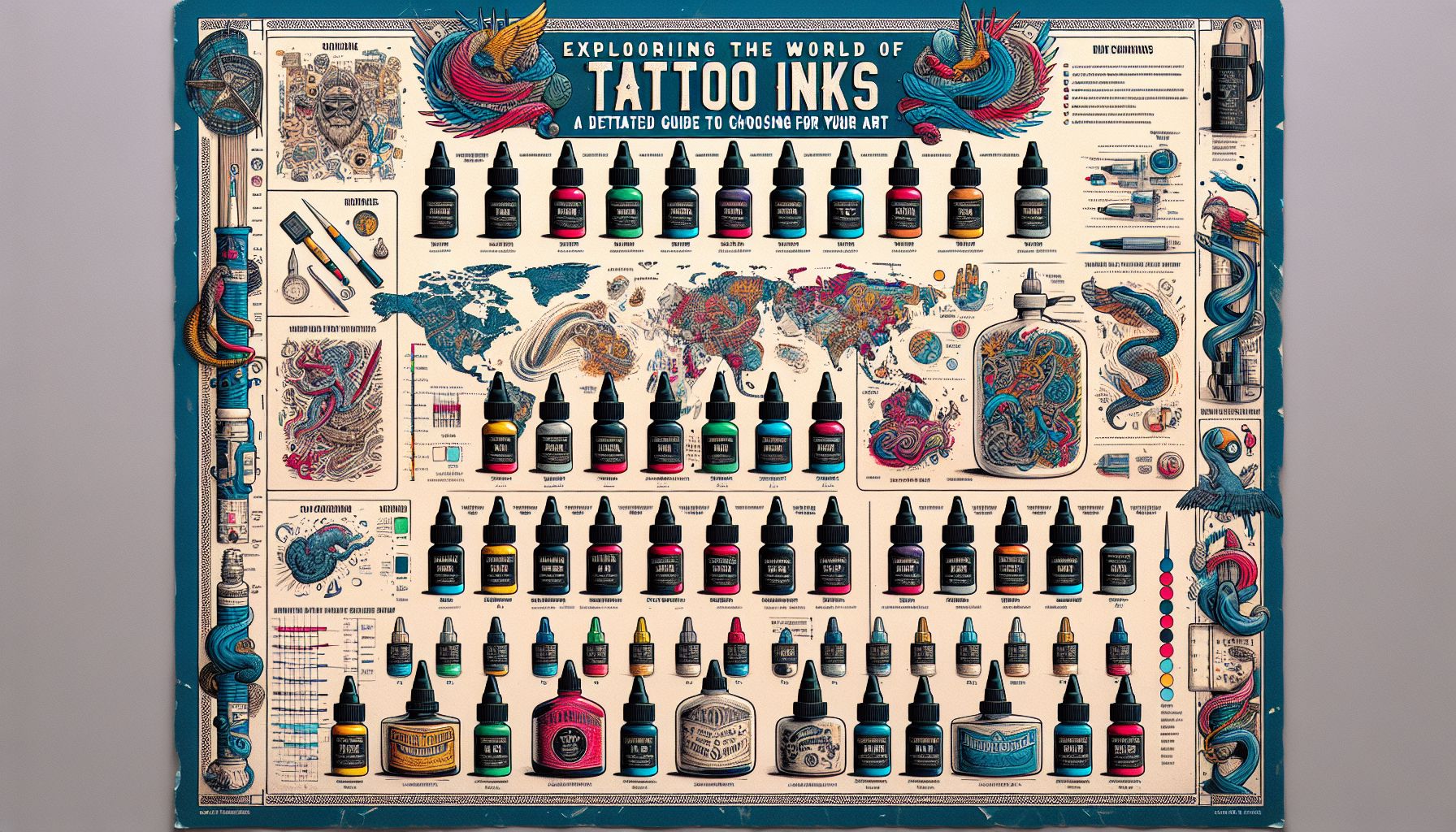In the vibrant world of tattooing, an artist’s canvas comes alive with the help of one essential item: tattoo ink. I’ve seen its evolution first-hand, from the days of limited color palettes to the current explosion of shades and formulas. Having been around the block a time or two, I’ve both observed and partaken in the subtle art of selecting the right hues and brands for the task at hand. In this exploration, I’m going to immerse you in the colorful world of tattoo inks – a critical component of your tattoo supplies arsenal that can make or break your artwork.
Tattoo inks have undergone a significant transformation over the years. Back when I first grabbed a machine, the options were almost rudimentary. You had your basic black, a handful of primary colors, and if you were lucky, a couple of shades in between. The focus was more on the design’s structure rather than its color diversity. Fast forward to today, the spectrum of available inks is astounding – a testament to the art form’s advancement and the diversity of client demands.
When we talk about tattoo inks today, we’re discussing a complex, technical product. Varying in consistency, quality, and safety, modern inks are compounded with different types of pigments, carriers, and sometimes even plasticizers to achieve the desired performance. The pigments can be anything from heavy metal compounds to organic dyes, while carriers help to evenly distribute the pigment and can include glycerin, ethanol, or distilled water.
One of the big game-changers I’ve noticed is the emergence of vegan and organic inks. Tattoos are for everyone, and now even those with the strictest ethical or health concerns can get inked confidently. Brands like Intenze, Eternal, and Fusion have developed their own vegan-friendly formulas, ensuring no animal products or byproducts in sight. This move towards inclusivity is not just good for business; it’s a reflection of tattooing’s growth as a considerate, responsible industry.
Safety and regulations around tattoo inks have also tightened, and for good reason. Your skin is the largest organ of your body, and what you put into it is as crucial as what you eat. In the past, the FDA didn’t regulate tattoo inks for the most part, but with increasing health awareness, many manufacturers now produce inks meeting rigorous safety standards.
Now, let’s talk color. Black ink is the bedrock of most tattoos, used for outlines and shading. Over time, I realized that not all black inks are equal. Some have a cooler tone, while others have a warmer touch. Artists need to choose based on the end goal of the design and the client’s skin tone. When it comes to colored inks, the variety is awe-inspiring. I remember when getting the perfect shade meant mixing inks, which could sometimes lead to unpredictable results. Nowadays, pre-mixed shades have eliminated much of that guesswork.
As an artist, the consistency of the ink dramatically affects your experience. A thicker ink might be ideal for bold, solid fill areas but challenging for intricate shading work. Ink consistency can affect the healing process as well, influencing how the tattoo will look once it has settled into the skin. I’ve seen tattoos heal with vibrancy while others lost their luster, often an outcome linked to the type and quality of ink used.
To the new artists in this industry, my advice is always to sample different brands and types of inks to find what works best for your style of work. You’ll come across favorites, certainly, but continue to experiment. In my career, I’ve had to adjust my ink preferences as formulas improved and new brands emerged to fit the evolving styles of tattoos and the needs of my clients.
Another critical aspect is the shelf life and proper storage of tattoo inks. I’ve learned this the hard way – neglect these factors, and you’ll be surprised by how quickly your supplies can degrade. Keep your inks in a cool, dark place, away from direct sunlight, and always check the expiration dates before use. Remember, no artwork will hold up if the medium used is subpar.
In conclusion, as part of your tattoo supplies, the ink you choose is as much a personal signature as your style of tattooing. The variety of tattoo inks available today is not only a testament to technological advances but also to the commitment of the tattoo industry to safety, inclusivity, and artistic freedom. From carbon blacks to the whitest whites and the rainbow of colors in between, each vial of ink holds a story, a possibility, an artistic potential waiting to unfurl on someone’s skin.
For seasoned veterans and newcomers alike, remember that the best tattoos are borne not just from talent, but from using high-quality, safe tattoo supplies. Your ink is your ally; choose it wisely, understand its nature, and your art will speak volumes through the ages.



